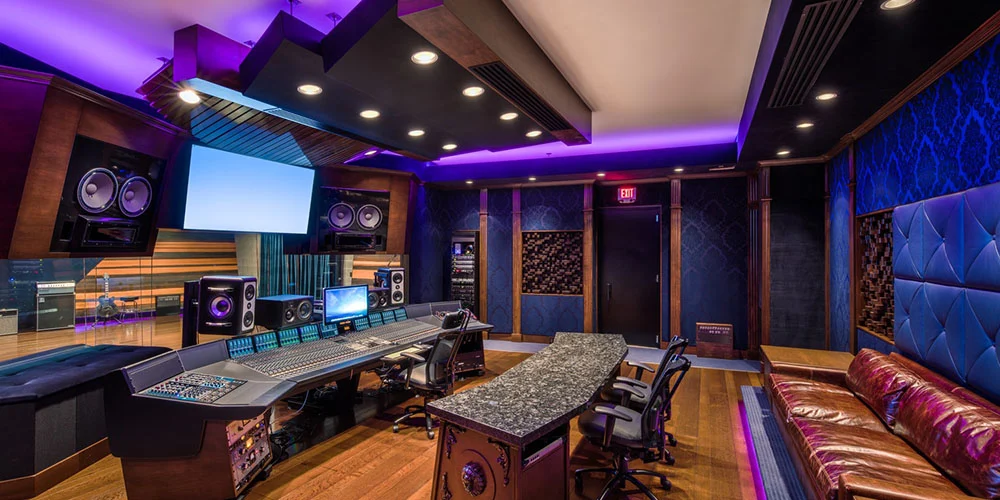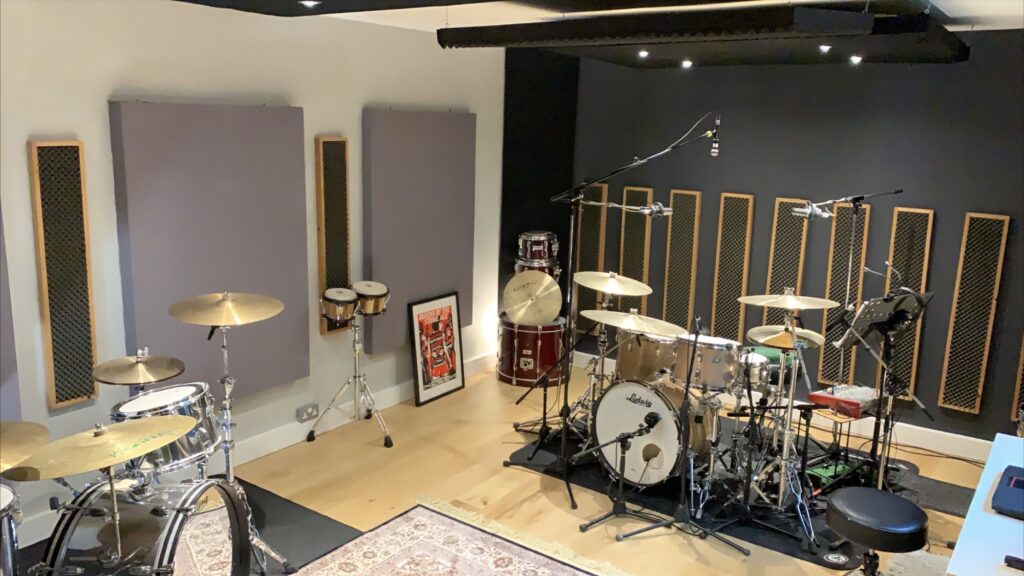Acoustic treatment is essential for recording studios for creating high-quality sound. While many focus on equipment and instruments, the room’s acoustics play an equally important role in producing clear, professional recordings. Without proper treatment, studios can experience issues like echo, distortion, and unbalanced sound, which ultimately affects the final product.
What Is Acoustic Treatment?
Acoustic treatment involves using materials and methods to control sound within a room. The goal is to reduce unwanted noise, echoes, and reflections, while improving sound clarity and balance. This treatment differs from soundproofing, which blocks noise from entering or leaving the room, as it focuses on improving sound quality within the space.
The Role of Acoustic Panels in Recording Studios
Acoustic panels are one of the most common tools used for treatment. These panels absorb mid-to-high frequencies, reducing echoes and making the sound clearer and more precise. Installing acoustic panels on walls, ceilings, and even floors helps minimize sound distortion and enhances the clarity of recordings.

Why Recording Studios Need Acoustic Treatment
Recording studios require controlled environments where sound behaves predictably. Poor acoustics can lead to unwanted reverb, muddiness, or distortion, making it difficult to capture clean audio. Acoustic treatment ensures that recordings are clear, free of distractions, and true to the original sound being produced.
How Acoustic Treatment Improves Sound Quality
When sound waves hit untreated surfaces, they reflect off walls, creating echoes and reverb. This can muddy the sound, making it harder to distinguish between different instruments or vocal tones. Acoustic treatment absorbs these reflections, allowing sound to be captured as it is, leading to a more accurate and professional result.
Acoustic Treatment for Different Studio Areas
- Control Rooms: The control room is where engineers and producers listen to recordings. Accurate sound is crucial here, and acoustic treatment helps ensure that what they hear is true to the recording.
- Live Rooms: These rooms, where artists perform, benefit from acoustic treatment to balance sound and prevent unwanted reflections that could interfere with the recording process.
- Vocal Booths: Acoustic treatment in vocal booths ensures vocal clarity and reduces unwanted background noise, providing clean and clear recordings.
The Difference Between Acoustic Treatment and Soundproofing
It’s important to note the distinction between acoustic treatment and soundproofing. Soundproofing prevents external sounds from entering the studio, while acoustic treatment focuses on improving the internal sound quality. Both are important for a recording studio, but acoustic treatment is what truly enhances the room’s sound dynamics.
See Also: 9 Benefits of Acoustic Panels for Your Recording Studio
Choosing the Right Acoustic Treatment
Selecting the appropriate acoustic treatment depends on the studio’s size, layout, and specific needs. Common materials include acoustic panels, bass traps, and diffusers. Each material serves a different purpose—bass traps control low-frequency sounds, while diffusers scatter sound waves to reduce echoes.
Call us: Contact Waseem Technical Soundproofing Expert in Dubai For Soundproofing: +971 50 209 7517
Conclusion
Acoustic treatment is essential for any recording studio that wants to produce professional-grade audio. By controlling sound reflections and improving the overall sound quality, acoustic treatment transforms a basic room into a professional recording environment. Investing in acoustic treatment ensures that the recordings are clear, crisp, and true to the artist’s original performance.




